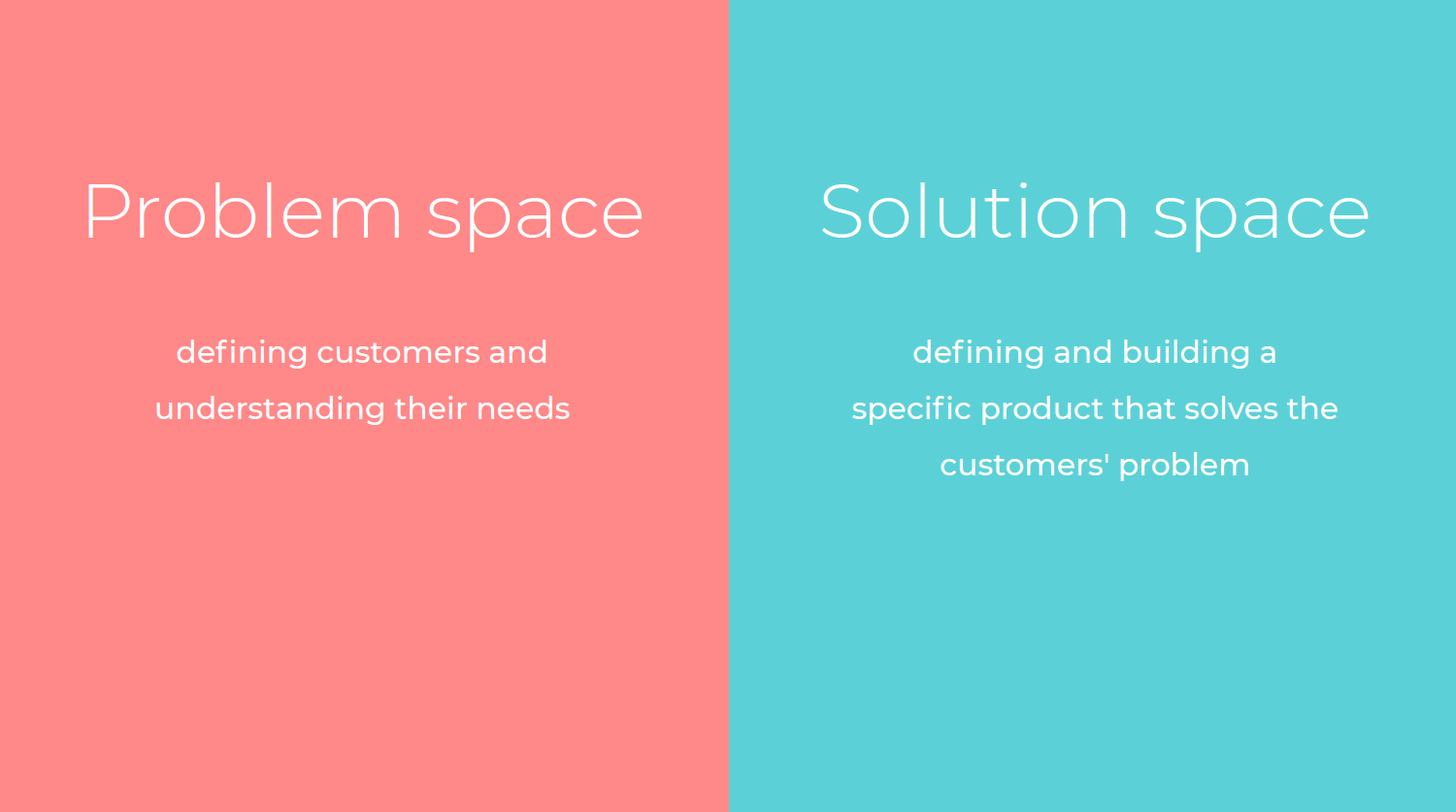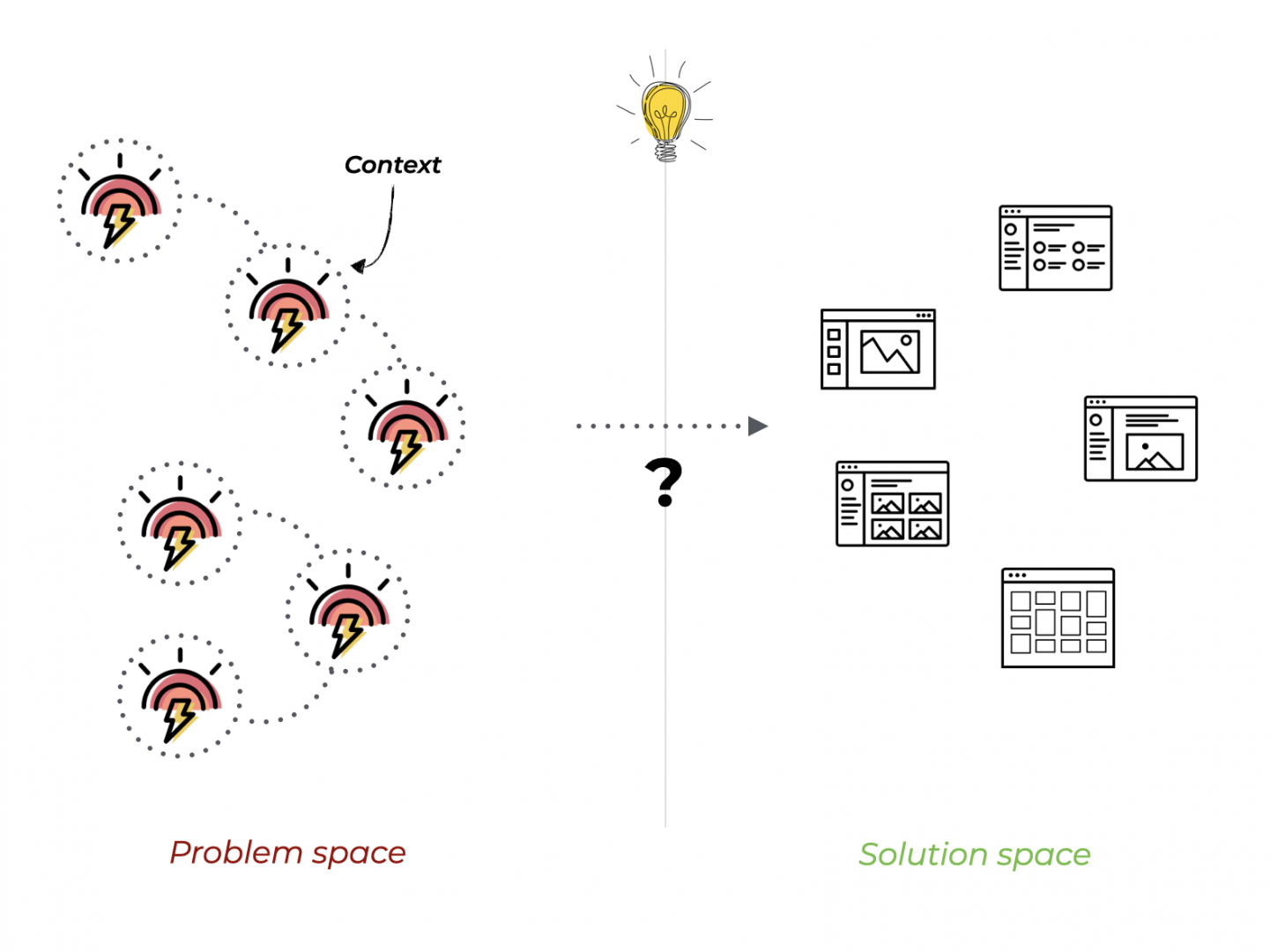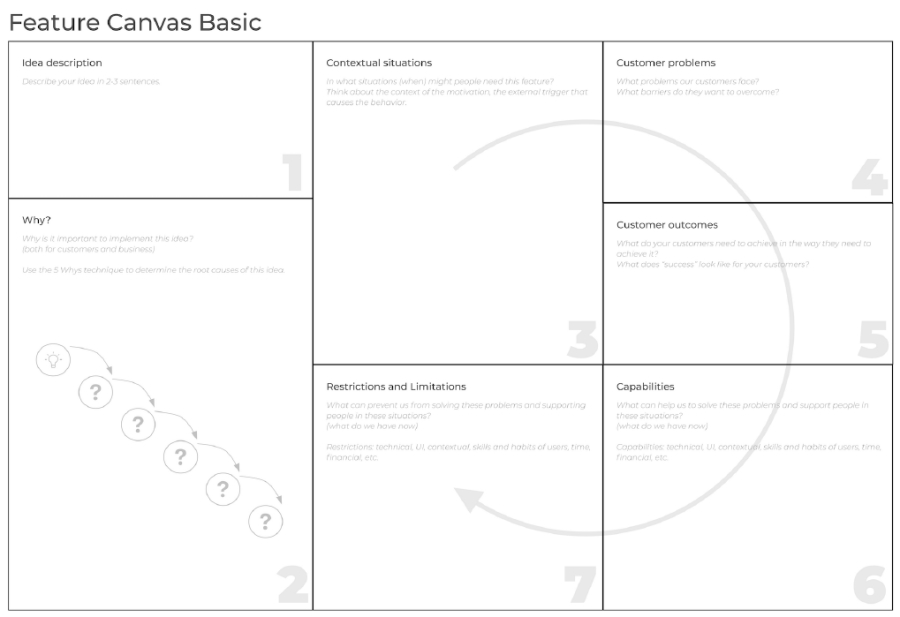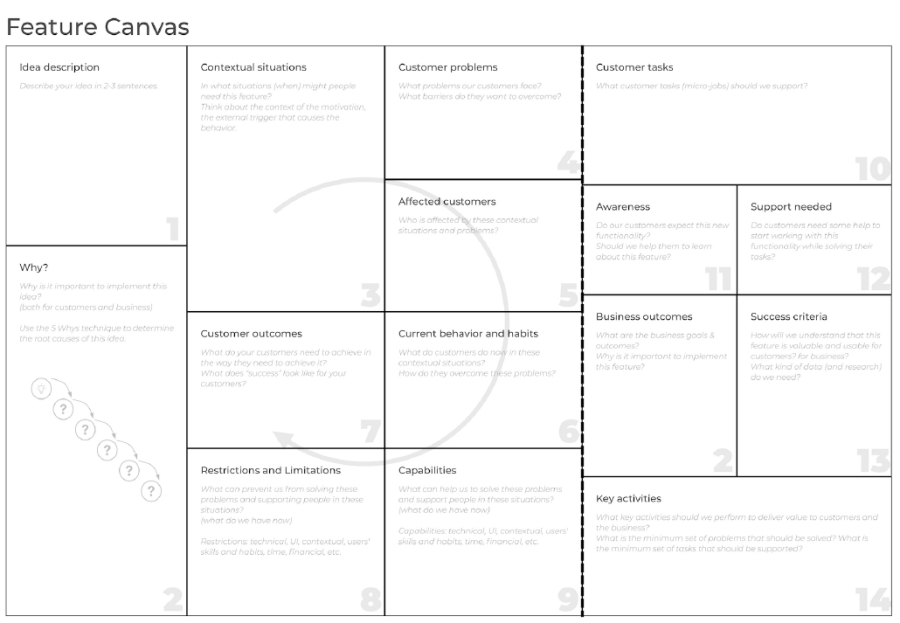Product managers, business owners, UX experts, and other professionals dedicate much of their time to generating new feature ideas and discussing ways to enhance the user experience. And when an idea about improving a product or service comes to their mind, it’s tempting to start designing a specific solution right away. But the question is: is every idea beneficial for the product?
The truth is that adding more features to a product or service won’t always bring more value to end-users. Swiss army knives, for example, are handy and provide a set of tools to address a wide range of needs. However, as manufacturers add more and more tools to them, the knives get heavier, less usable, and less valuable to end-users.
There is always a customer problem behind every solution. Therefore, you need to keep asking ourselves: what are my customers’ problems? It is crucial as sometimes useful features for a specific target audience ruin another group of people’s expectations. Thus, before a problem is solved, you need to identify this problem and understand it first.
Here is where the feature canvas framework comes into play. It can help you generate and analyze product or service ideas and cherry-pick those that solve end-users’ actual problems and eliminate feature creep.
The two spaces to focus on
There are always two virtual spaces: the problem space and the solution space. Keeping the problem space and solution space separate is the best way to achieve a product-market fit. The better you understand the problem space, the better solution you will find.

The problem space is where all the customer problems that need to be solved live. However, customers’ needs are not served on a silver platter. It’s the product team’s job to define the product’s problem space.
Focus on the problem space to gain a profound understanding of your customers, their needs, and usage context. Then proceed to the solution space to come up with a new feature idea, modify the initial one, or even abandon it to solve the real customer’s problem.
“Spending enough time in the problem space, you will be able to create the products that users value and recommend to others.”
The Feature Canvas Framework
New features are never intended to be a bad thing. There can be many reasons behind implementing them, like being overwhelmed with work, cognitive biases, human passion for inventing, etc.
We think we know our customers. We believe we know what they want, but our customer base evolves, which means teams continuously have to think about whether they deliver value to customers.
“The Feature Canvas Framework was created to help everyone spend more time in the problem space and determine the real customer’s problem.”
The Feature Canvas is a structured set of simple yet powerful questions that help you stick to the problem space. It’s a framework to start working on an idea or feature, keeping in mind your customers’ problems and usage context.
It helps get your teammates on the same page about the initial idea, customer problems, and other essential things from the problem space.

Why use Feature Canvas?
The feature canvas framework helps:
- Focus on the customers’ problems instead of the internal team’s wishes or biases;
- Identify blind spots in the customers’ knowledge and prepare for the research;
- Conduct more efficient kickoff meetings, like pitching feature initiation, etc.;
- Hold backlog grooming and planning sessions if you are a Scrum team;
- Evaluate product ideas through the problem-space lenses;
- Keep all necessary information in one place;
- Present research results to others in a well-structured way.
It can become a single source of truth for you, for your team, and stakeholders. You can keep the problem space in front of you with the help of the canvas.
Feature Canvas versions
There are two versions of this canvas: basic and full. Read on to learn more about each of them.
The basic version:
You can use the basic version for almost any kind of idea, digital and non-digital.
It represents a set of questions that you must answer while analyzing ideas. This canvas encourages you to spend more time in the problem space and helps you to align your team on the initial idea.
Tip: If you don’t know how to get started with filling it out, follow the numbers.

Source: featurecanvas.com
The canvas contains seven blocks.
- Idea description
This block helps you keep the initial idea in front of you and ensure that all teammates know it.
- Why?
Ask yourself “why?” to understand why it is critical to implement this idea both for customers and the business. It is the most important block in the canvas.
Tip: You can use the five whys technique to determine the underlying reasons for the idea.
- Contextual situations
Think about different contextual situations, specifically in what situations customers might need this feature.
- Other blocks: Customer problems, Customer outcomes, Capabilities, Restrictions and limitations.
Most of these blocks contain not only questions but also useful examples to help you fill them out.
Use the basic version during brainstorming sessions, planning sessions, or evaluate your existing solution or feature.
The full version:
The full version contains more blocks and more questions to ask. The so-called analysis area on the left comprises blocks from the basic version plus two additional blocks — Affected customers and Current behavior and habits. These blocks help you broaden the understanding of the customers by focusing on their behavior and characteristics.

Source: featurecanvas.com
The planning area on the right helps not forget about business outcomes and make the first step towards the solution space by focusing on what might be required for the idea implementation.
It inspires you to think about customer tasks (aka micro-jobs), support needed during the customer journey, business outcomes and success criteria, and of course, about key activities.
You can download an example of the filled canvas here.
The full version can be used either as a one-time synchronization tool or can be maintained throughout the idea life cycle.
Summary
Trying to improve experience, service, or product, it’s tempting to add as many new features as possible to it. But it doesn’t work that way. You must know your customers, their needs, problems, and their tasks to meet their expectations and deliver value to them.
The Feature Canvas is a useful tool for everyone working with product and service development. It helps evaluate different product ideas through the “problem space” lenses and decide whether to put them in work. It allows putting everyone on the same page about the reasons behind the new feature and creates alignment on the initial idea.
Have a new product feature in mind? Before designing it, try the Feature Canvas first.
Authors
Nick Efimov, Chief Product Officer at UXPressia Academy & Senior Consultant at UXPressia
Nick has 15+ years of experience in software development and expert knowledge of UX, user research, and product management. He is an inspiring UX community leader, mentor, and coach.

Anastasia Sanets, Customer Success Manager at UXPressia
During the day, Anastasia works as a Customer Support Manager. In her free time, she writes articles and contributes to content writing, which is her new passion.




